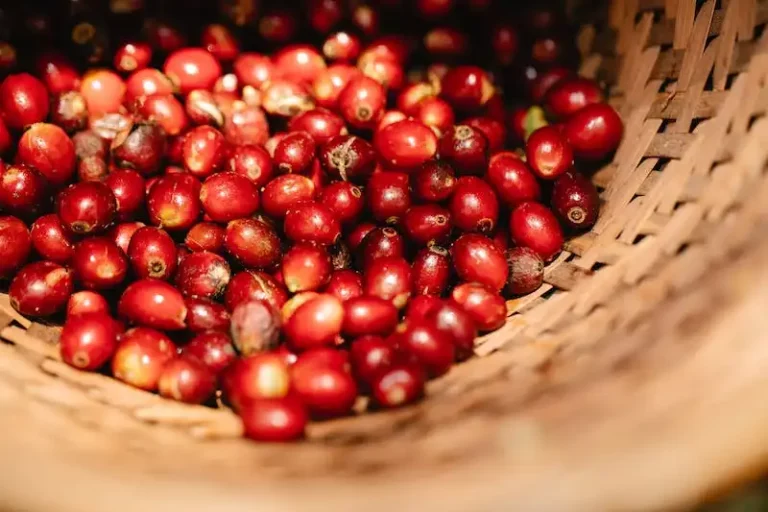The Peperomia Radiator Plant, also known as the Desert Privet Plant, is an indoor plant with silver foliage that can grow atop a variety of different surfaces. This trailing plant thrives in bright, indirect light and only needs watering once the top inch of its soil is dry. With over a thousand different varieties, there is likely a Peperomia Radiator Plant that you will love.
The Peperomia Radiator Plant, or Desert Privet Plant, is native to the foot terrain-based areas of the Americas. Despite their native habitat, Peperomia plants are easy to grow indoors and can survive in a range of conditions. They are also humidity-loving plants, so they may benefit from being placed on a tray with water to increase the humidity levels around them.
Caring for these plants is quite simple. They need well-drained soil and can be grown in plastic or ceramic pots. It’s important to note that the Desert Privet Plant has thick stems and leaves that store water, so they should not be overwatered. The Peperomia Radiator Plant is also known for its vibrant foliage, which ranges from green to yellow or even slightly discolored. It’s normal for the lower leaves to turn yellow or dry up, but they can easily be removed without harming the plant.
If you’re interested in propagation, the Peperomia Radiator Plant is a great choice. It can be propagated through leaf or stem cuttings. Simply place the cuttings in water or a well-drained soil mix, and new plantlets will begin to grow. The Desert Privet Plant can also be propagated through division by separating the clumps of plantlets that form above the soil.
In summary, the Peperomia Radiator Plant, or Desert Privet Plant, is an indoor plant that is easy to care for and can add a touch of vibrant foliage to any space. With its silver foliage and trailing growth habit, it is sure to be a favorite among plant lovers. Whether you’re a beginner or an experienced gardener, the Peperomia Radiator Plant is a great choice for a low-maintenance indoor plant that will thrive in a variety of conditions.
Radiator Plants Peperomia spp
Radiator plants, also known as Peperomia spp, are a unique species of plants that are native to Central and South America. They are commonly grown as houseplants due to their attractive foliage and low maintenance requirements.
Peperomias are named after the Greek word “peperi” meaning pepper, which refers to the small, round, and shiny leaves that resemble pepper. Their leaves come in a variety of shapes, sizes, and colors, including green, variegated, and even black.
One of the best features of radiator plants is that they can thrive in a wide range of conditions. They prefer bright, indirect light but can tolerate lower lighting conditions as well. These plants are known for their thick leaves, which can help them retain moisture and survive in drier environments.
When it comes to watering, it is important to let the soil dry out slightly between waterings. Overwatering can lead to mushy roots and black stems. To prevent this, make sure to check the moisture level of the soil before watering. Plastic pots are recommended to help retain moisture.
Propagation can be done by taking leaf or stem cuttings from the mother plant and placing them in moist potting soil. It is important to provide the newly propagated plants with high humidity and a warm environment to encourage root growth.
Radiator plants are great for everyone, whether you’re a beginner or an experienced gardener. They are low maintenance and can thrive in a variety of conditions. These plants are popular for their unique foliage and can be a great addition to any indoor or outdoor space.
When caring for radiator plants, it is important to take note of their specific needs. They prefer well-drained soil and should be placed in a location with good air circulation. If the leaves start to turn yellowed or discolored, it may be a sign that the plant is receiving too much direct sunlight.
In summary, radiator plants, or Peperomia spp, are a versatile and attractive species of plants that can bring a touch of green to any space. With their unique foliage, low maintenance requirements, and adaptable nature, these plants are a popular choice among plant enthusiasts.
What Are Radiator Plants
Radiator plants, also known as Peperomia, are a type of houseplant that belongs to the Piperaceae family. They get their common name because their thick leaves resemble a radiator. With their wide variety of species and cultivars, Peperomia plants are sold as both houseplants and plants for vivariums.
Native to tropical and subtropical regions, Peperomia plants are commonly found in Central and South America. They can be found in a range of habitats, from dry deserts to aquatic areas. Their natural habitat provides a clue to their care needs.
The leaves of radiator plants come in many shapes, sizes, and colors. Some varieties have variegated leaves, while others have solid green or silver leaves. The leaves of Peperomia plants are usually thick and fleshy, which allows them to store water and survive in dry environments.
When it comes to placement, radiator plants are fairly adaptable. They can tolerate a wide range of light conditions, but they prefer bright, indirect light. Placing them near a window with filtered light is a good option. Avoid direct sunlight, as it can scorch their leaves.
One important thing to note about Peperomias is that they are humidity-loving plants. They thrive in high humidity levels, so it’s essential to provide them with moist air. One way to increase humidity is to place the plants on a pebble tray filled with water or close to a humidifier. You can also mist the leaves regularly.
When it comes to watering, radiator plants prefer to have their soil evenly moist. However, like most houseplants, they don’t like to sit in water, so make sure the water drains well. It’s better to underwater than overwater Peperomia plants. If their leaves start to wrinkle, it’s a sign that they need more water.
Peperomias are relatively low-maintenance plants, making them an excellent choice for beginners. They can go for extended periods without watering, as long as they have a well-draining potting substrate. It’s always a good idea to let the top inch of soil dry out before watering again.
Silver-leaf Peperomia, also known as Peperomia capertina, is one of the most popular varieties of radiator plants. It is named for its silver-colored leaves that have dark green veins. Another commonly grown variety is Peperomia obtusifolia, also known as baby rubber plant. It has glossy green leaves and a bushy growth habit. Peperomia clusiifolia, also called the red-edge radiator plant, has succulent-like leaves with red edges.
Radiator plants are a great addition to any indoor plant collection. Their unique foliage and relatively easy care make them a favorite among plant enthusiasts. Whether you’re an experienced plant lover or just starting, Peperomia plants are sure to give your collection a touch of vibrancy and life.
| Key Points: |
| – Radiator plants, or Peperomia, are houseplants with thick leaves resembling a radiator. |
| – They come in various species and cultivars and are native to tropical and subtropical regions. |
| – Peperomia plants have thick, fleshy leaves that help them store water and survive in dry environments. |
| – They prefer bright, indirect light and thrive in high humidity levels. |
| – Peperomias are low-maintenance plants but need well-draining soil and occasional watering. |
Radiator Plants Facts
Radiator plants, also known as Peperomia, are a popular choice for indoor gardens. They are native to humid tropical and subtropical regions, which is why they thrive in perfectly humid environments. If you’re planning to grow a radiator plant, it’s important to try and recreate the humid conditions they are accustomed to in their natural habitat.
When it comes to lighting, radiator plants prefer indirect lighting. They can tolerate low light conditions, but they will thrive best with bright but indirect light. Be careful not to expose them to direct sunlight, as it can cause their leaves to burn. If there’s not enough light, the plants tend to grow elongated and leggy. To avoid this, place the plants in a spot with enough lighting or use artificial lighting.
Watering is another important factor to consider when caring for radiator plants. They prefer to be on the drier side, so be sure not to overwater them. It’s best to allow the soil to dry out a bit before watering again. The watering frequency will vary depending on the temperature and humidity levels in your home. As a general rule, water the plants when the top inch of soil is dry. Avoid letting the plants sit in water, as this can lead to root rot.
Radiator plants come in a wide range of varieties, each with its own unique characteristics. Some popular varieties include the Peperomia obtusifolia, which has heart-shaped and smooth leaves, and the Peperomia caperata, which has textured and marbled leaves. Peperomia variegata is another popular variety with vibrant silver and green leaves.
When it comes to repotting, radiator plants don’t require frequent repotting like some other houseplants. You can repot them every 2-3 years or when you notice the plant has outgrown its current container. Use a well-draining soil mix and make sure the new pot has drainage holes to prevent waterlogging.
Despite their tropical habitat, radiator plants can tolerate average indoor temperatures. They prefer temperatures between 65-75°F (18-24°C). However, they are sensitive to cold drafts, so avoid placing them near windows or in drafty areas.
Radiator plants are relatively low-maintenance and can add a touch of greenery to any indoor space. Their unique foliage and easy-care nature make them a great choice for both beginners and experienced plant enthusiasts. Whether you’re looking for a compact peperomia with small leaves or a columnar variety with elongated leaves, there’s a radiator plant for everyone.
Description
Peperomia obtusifolia, commonly known as the Peperomia Radiator Plant or Desert Privet, is a unique and easy-care plant that is a favorite among growers. The plant features thick, succulent-like foliage that cascades from its stems, giving it a full and bushy look. The leaves of the Peperomia obtusifolia are typically smooth and shiny, but can also be super-fuzzy or felted, depending on the variety. They range in color from green to yellowed or even white, adding to the plant’s visual appeal.
Peperomias are known for their ability to thrive in a variety of lighting conditions, making them suitable for indoor or outdoor placement. They prefer indirect or filtered light, but can also tolerate less-than-ideal lighting conditions. It is important to note that too much direct sunlight can damage the leaves and cause them to become dried out or even burned.
When it comes to care, Peperomia obtusifolia is a relatively easy plant to grow. They prefer a well-draining soil mix that retains some moisture but does not become waterlogged. It is important to allow the soil to dry out slightly between waterings to prevent overwatering, which can lead to root rot and other problems. This plant is not a heavy feeder, so a balanced fertilizer applied every few months should be sufficient. Peperomia obtusifolia can be propagated through stem or leaf cuttings, and plantlets that form on the mother plant can also be removed and grown separately. Overall, this plant is a great choice for both beginner and experienced growers due to its low-maintenance nature and unique features.



